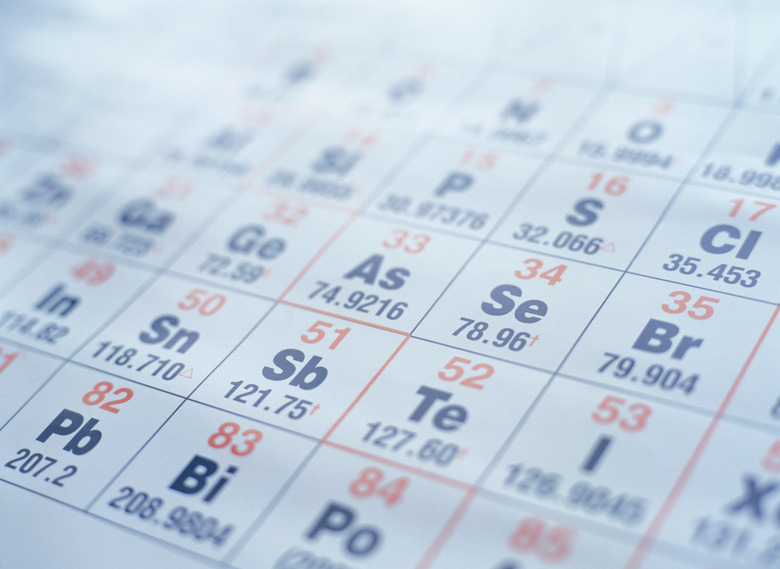What Do You Need To Know To Calculate Molarity?
Whether you're doing an experiment or taking an exam, at some point in chemistry class you'll need to calculate molarity. Molarity is the measure of how concentrated a solution is by stating how many moles of a solute are in each liter of the solution. To calculate molarity, you only need the molarity formula and a few pieces of information.
Understanding the Formula
Understanding the Formula
To calculate molarity, you need to do a basic division problem. Since molarity is the moles of a solute per liter of solution, the formula is the number of moles of solute divided by the number of liters of solution. To better recall this formula, keep in mind that molarity can also be written as "mol/L" or "moles per liter."
Figuring out Moles
Figuring out Moles
While grasping the formula for molarity is straightforward, you may get a bit confused about figuring out how many moles of a solute you have. Remember, a solute is the substance dissolved in a solution. To calculate how many moles of a solute you have, you need to know how many grams of solute were used, the chemical formula of the solute and the atomic weights of the elements that make up the solute. Atomic weights can be found on the periodic table of the elements. Once you have this information, you can calculate how many moles of solute you have by adding up the individual elements' atomic weights, then dividing the grams of solute by the atomic weight of the solute.
Measuring the Solution
Measuring the Solution
The final key piece of information you need to calculate molarity is the number of liters of solution you have. Because molarity is moles of solute in one liter of solution, you need to convert the amount of solution you have into liters. For example, if on an exam or in the lab, you are given the amount of solution in milliliters, you'll need to divide that amount by 1,000 to change it into liters for the molarity formula.
Putting it Together
Putting it Together
The following example shows how to put everything together to calculate molarity if you have 20 grams of NaOH dissolved into 500 milliliters of water. First, you'll convert the 500 milliliters to liters — 500 divided by 1,000 — giving you 0.500 liters of solution. Then, you'll take the solute apart to determine its atomic weight. Since sodium's atomic weight is 23 grams, oxygen's is 16 grams and hydrogen's is 1 gram, one mole of NaOH is 40 grams. With 20 grams of NaOH, this means you have 0.5 moles of the solute: 20 divided by 40. Now that you have the number of moles and have converted your solution to liters, you can figure out that the molarity of the solution — 0.5 moles divided by 0.5 liters — is 1 mole per liter.
Going Further
Going Further
Using the molarity formula and a bit of algebra, you can determine other numbers based on information you're given about a solution. If you know molarity and how many liters you have, you can calculate how many moles of solute are in the solution or how many grams of the solute were used. Likewise, given molarity and the amount of solute used or the number of moles, you can figure out how many liters of solution you have.
Cite This Article
MLA
Painter, Tammie. "What Do You Need To Know To Calculate Molarity?" sciencing.com, https://www.sciencing.com/need-calculate-molarity-7842/. 24 April 2017.
APA
Painter, Tammie. (2017, April 24). What Do You Need To Know To Calculate Molarity?. sciencing.com. Retrieved from https://www.sciencing.com/need-calculate-molarity-7842/
Chicago
Painter, Tammie. What Do You Need To Know To Calculate Molarity? last modified August 30, 2022. https://www.sciencing.com/need-calculate-molarity-7842/
